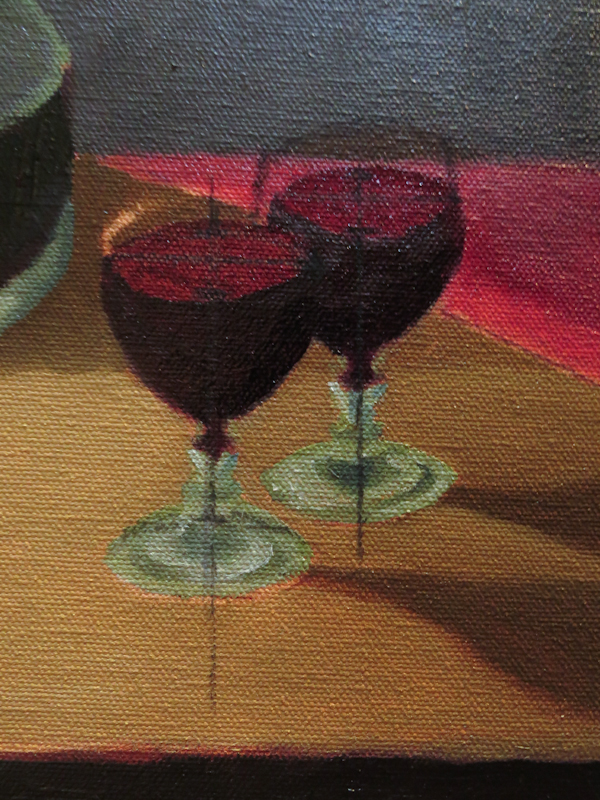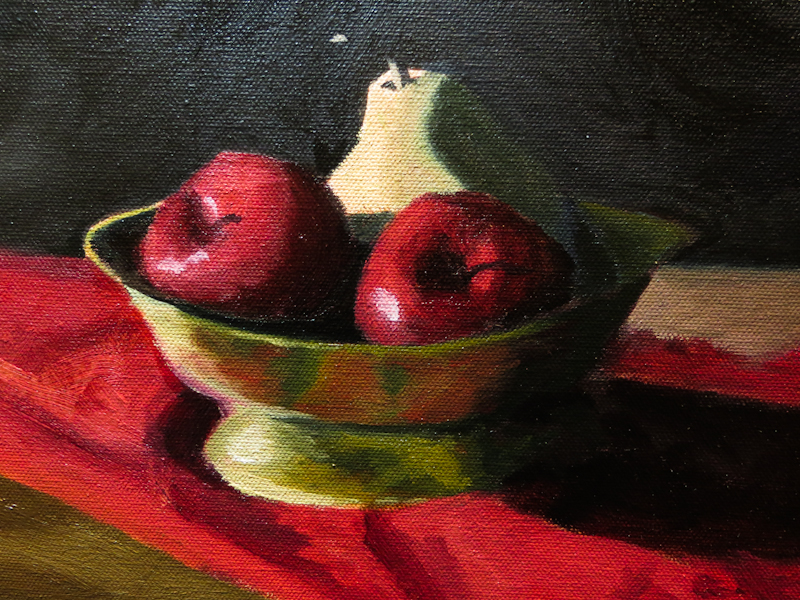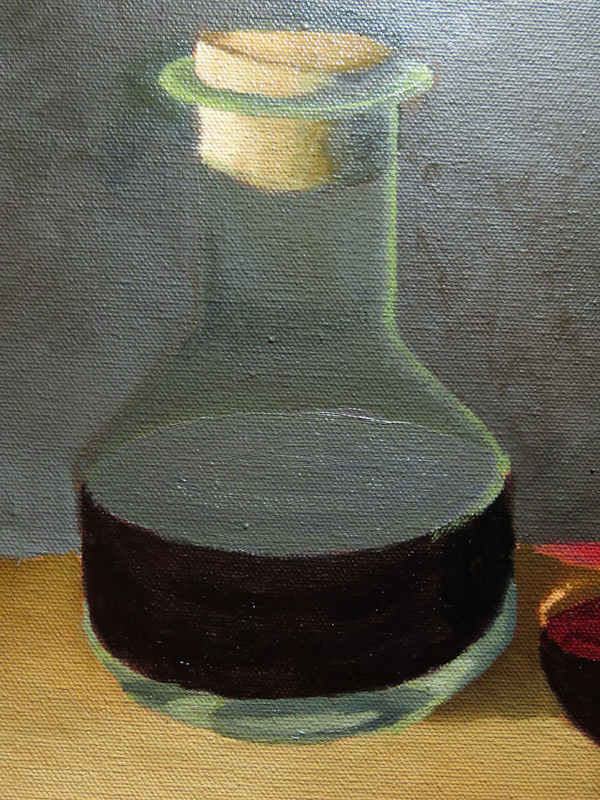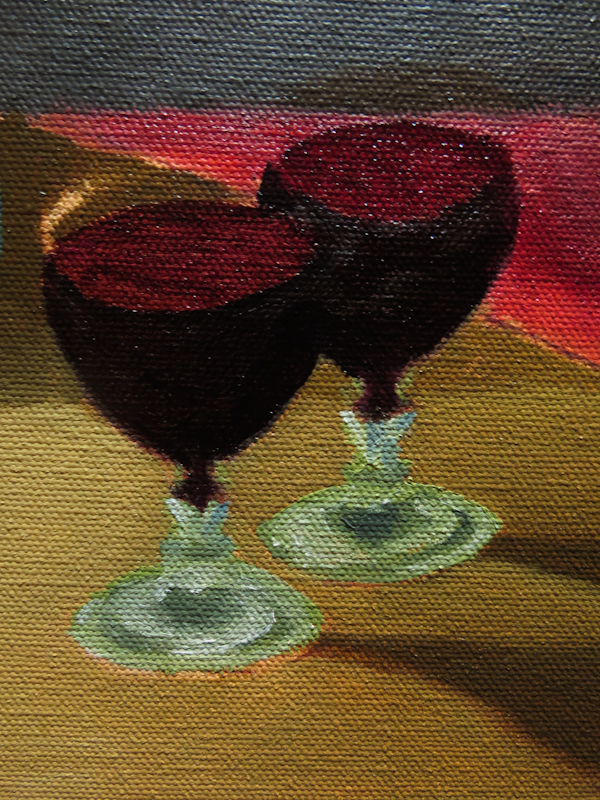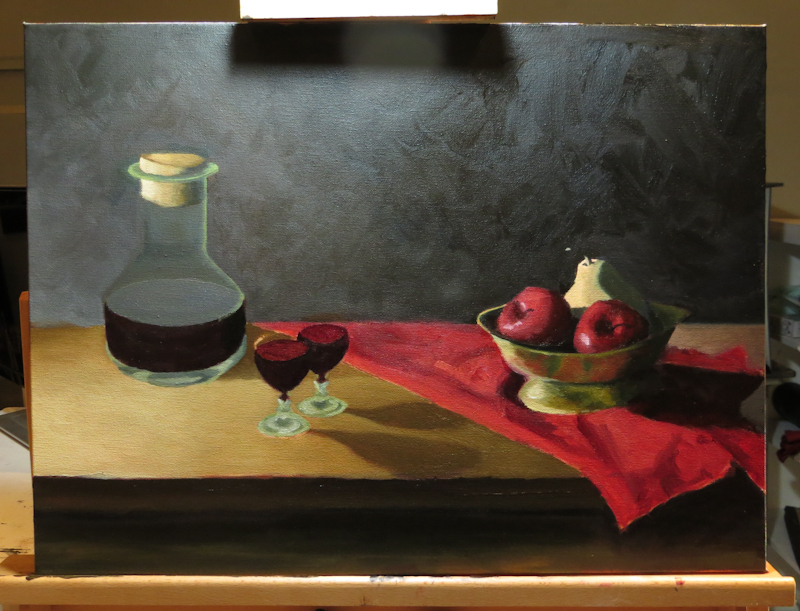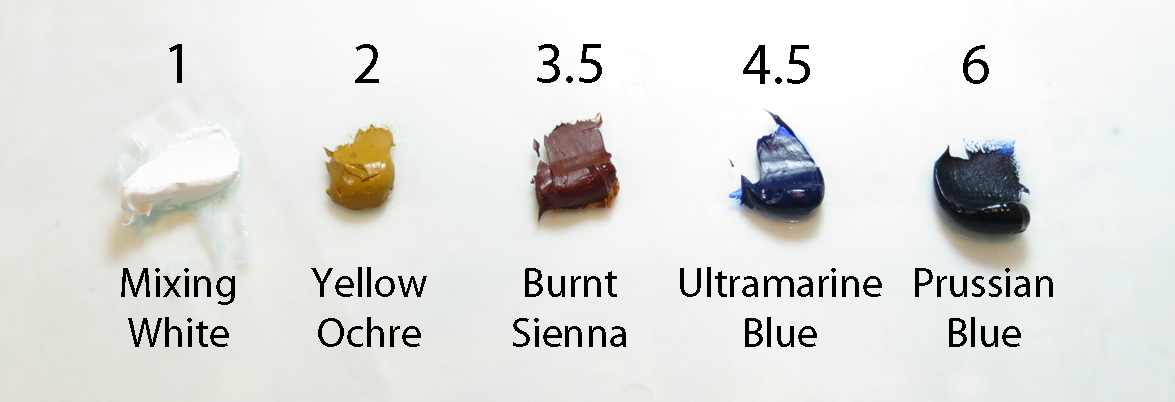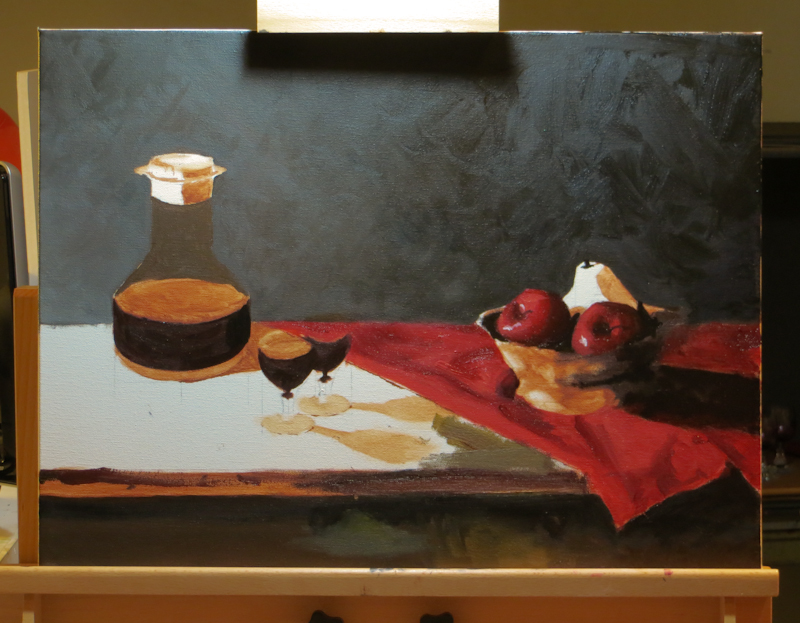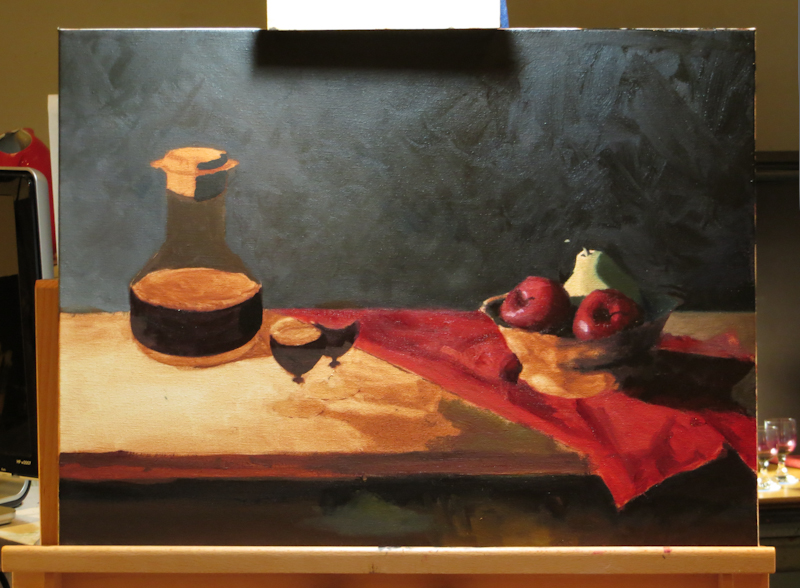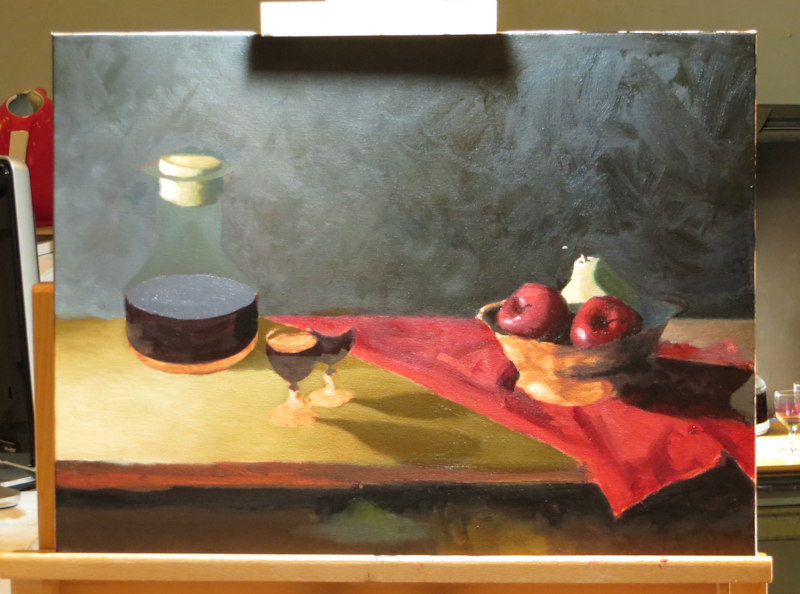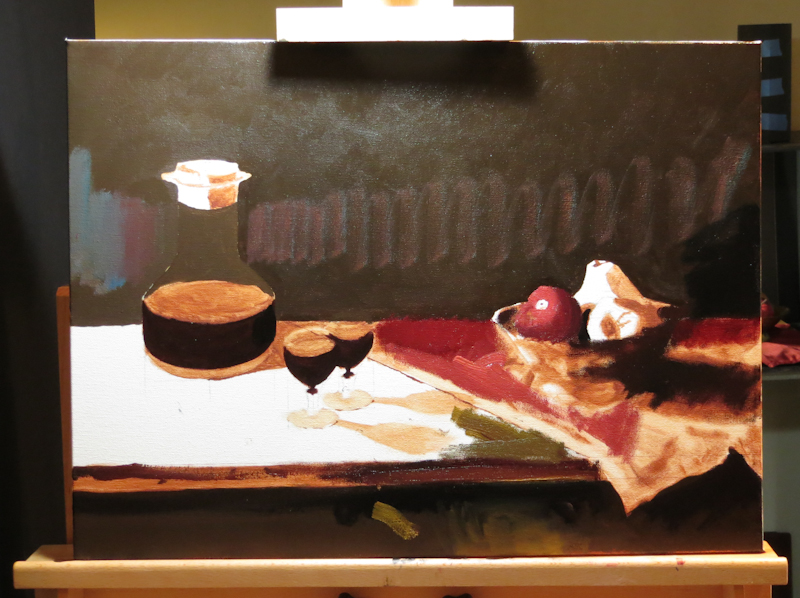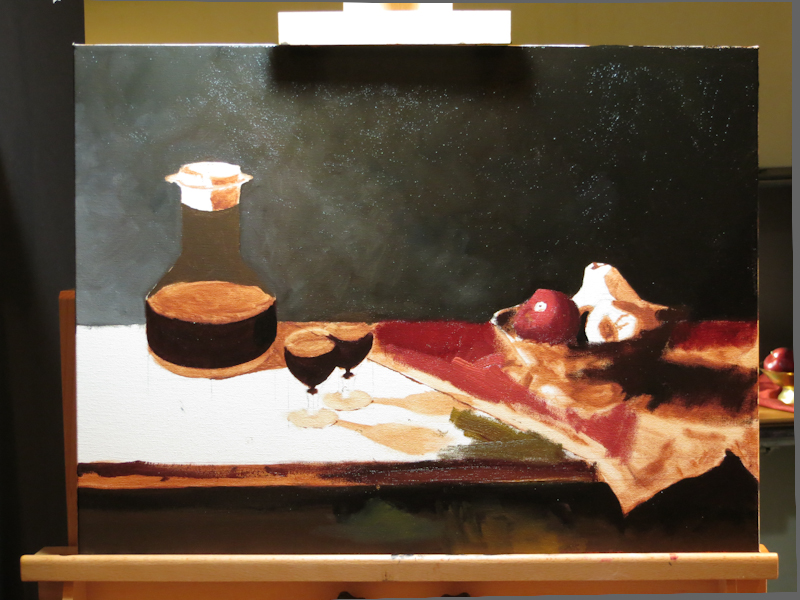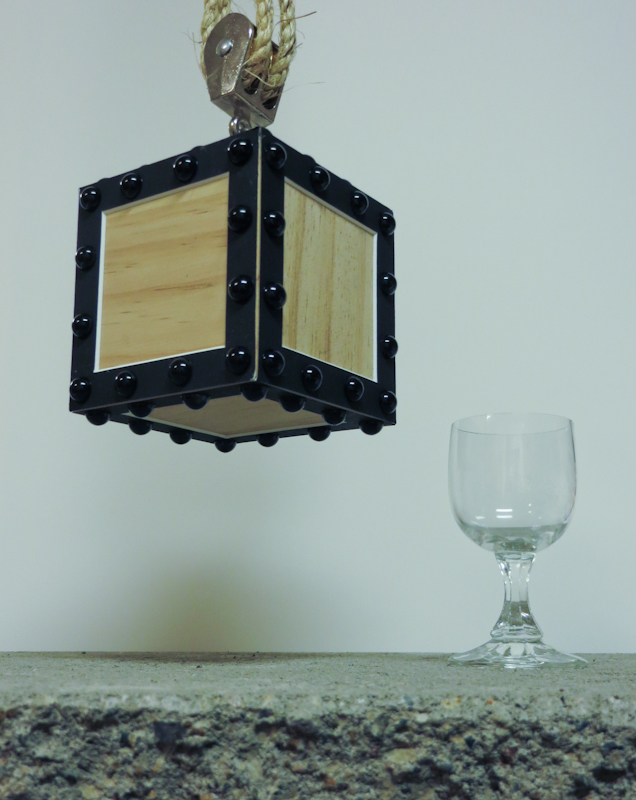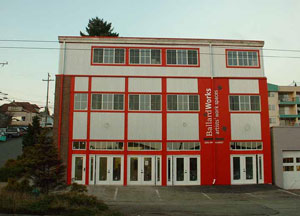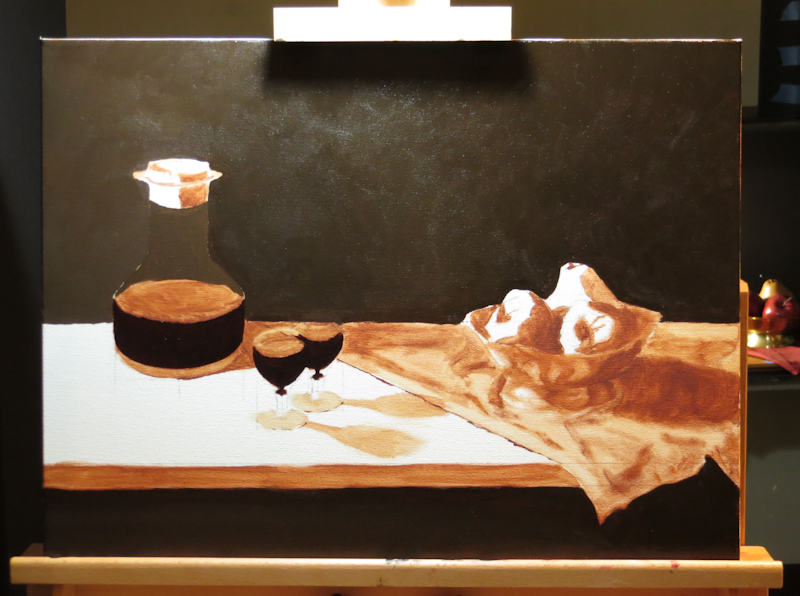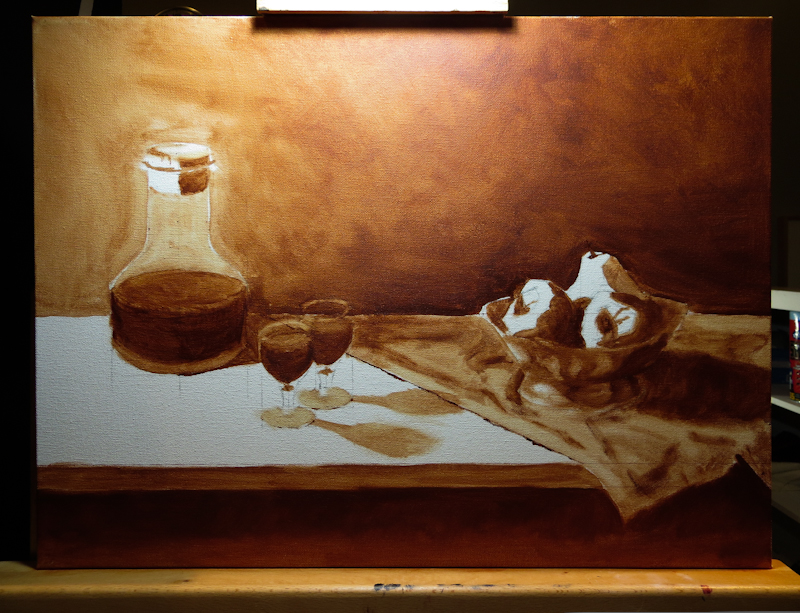Over time, the shapes in a painting may diverge from those in the original drawing. Sometimes this is intentional, but often times, the proportions and viewpoints just get slightly off and the painting no longer reads correctly. At this point, it helps to reestablish the drawing.
This week, I put the paintbrushes down and picked up a stick of vine charcoal to correct my ellipses and adjust the various objects to be consistent with a single viewpoint. The nice thing about using vine charcoal is that you can easily erase it with a dry bristle brush.

By this point, I’ve lowered the viewpoint and reduced the size of the base of the front glass. I also extended the back glass bit further to the left so that it appears to be the same size as the front glass.

My attempt at rendering the scallops along the rim of the bowl doesn’t read correctly. The bowl looks like it is pinched and lopsided. Also, the reflections and shadows don’t really convey roundness.

Here I’ve raised the front rim of the bowl and really worked to correct all of the ellipses. Once I was satisfied with the overall shape, I rendered the bowl, as if it were flat-shaded. Now when I go back and add in the reflections, they will be subordinate to the shading and this should help to preserve the roundness of the bowl.

